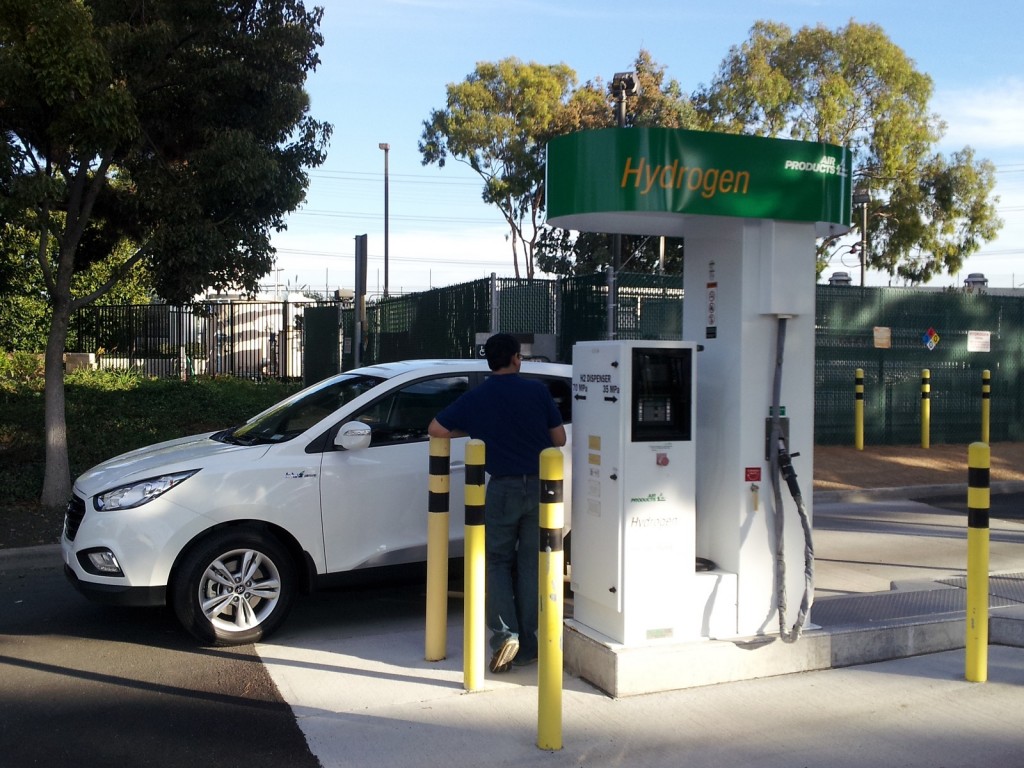Among owners and advocates of zero-emission vehicles, few topics generate as much back-and-forth debate (to put it politely) as those cars powered by hydrogen fuel cells.
Discussions of wells-to-wheels carbon footprint, the presently nonexistent hydrogen fueling infrastructure, and their purported advantages over electric cars produce energetic discussion.
DON'T MISS: 10 Questions On Hydrogen Fuel-Cell Cars To Ask Toyota, Honda & Hyundai
Blogger Joe Romm has created what he considers to be seven stipulations for an alternative-fueled vehicle to be successful in the long-term market.
The ThinkProgress author, an Elon Musk-class critic of hydrogen, outlined the barriers faced by all non-gasoline vehicles in a recent post.
Going through them with fuel cells in mind, they are:

2016 Toyota Mirai construction at Motomachi plant
1 – High first cost for vehicle: Now partially addressed: Toyota’s MegaFactory should jump-start experience curve effects, bringing sticker prices down
2 – On-board fuel storage: Addressed: Both the Toyota Mirai and Hyundai Tucson fuel-cell vehicles have adequate range and cargo space
3 – Safety and liability concerns: Addressed: Tucson Fuel Cell customers pump their own hydrogen in Canada; in Japan, attendants do the pumping – but then, they generally pump gasoline, too

2015 Hyundai Tucson Fuel Cell at hydrogen fueling station, Fountain Valley, CA
4 – High fueling cost compared to gasoline: (still a barrier)
5 – Limited fuel stations: (still a huge barrier)
6 – Improvements in the competition: Partially addressed: Toyota expects fuel-cell vehicles to have price premiums equivalent to those of its hybrid vehicles once economies of scale are fully realized
7 – Problems delivering cost-effective emissions reductions: Still a major barrier in the U.S.--but in Europe, where natural gas is three times as expensive, hydrogen from renewable-electricity electrolysis could soon be cost-competitive with hydrogen from natural gas reforming. (For a breakdown, see the “Renewable Hydrogen” tab at www.tinyurl.com/FCStats)
ALSO SEE: Toyota Fuel-Cell 'Megafactory' Matches Tesla Gigafactory In Impact
Romm's list, in fact, may provide the best way to put the impact of Toyota’s MegaFactory into context.
Doubling the global production of proton-exchange membrane fuel cells in a single year won’t solve the most intractable issue fuel cells face.
That's infrastructure, or the need to build from scratch dozens to hundreds of hydrogen fueling stations in a given region to support even a population of tens of thousands of hydrogen-powered vehicles.

2015 Hyundai Tucson Fuel Cell at hydrogen fueling station, Fountain Valley, CA
But Toyota's announcement puts a smaller piece of the puzzle in place.
It kick-starts the production growth necessary for the nascent hydrogen fuel-cell vehicle industry to begin reaping the benefits of experience curve effects--and the cost reductions that inevitably ensue.
In other words, it will enable the cars to be built more economically.
Which is, perhaps, half of the battle.
_________________________________________________












